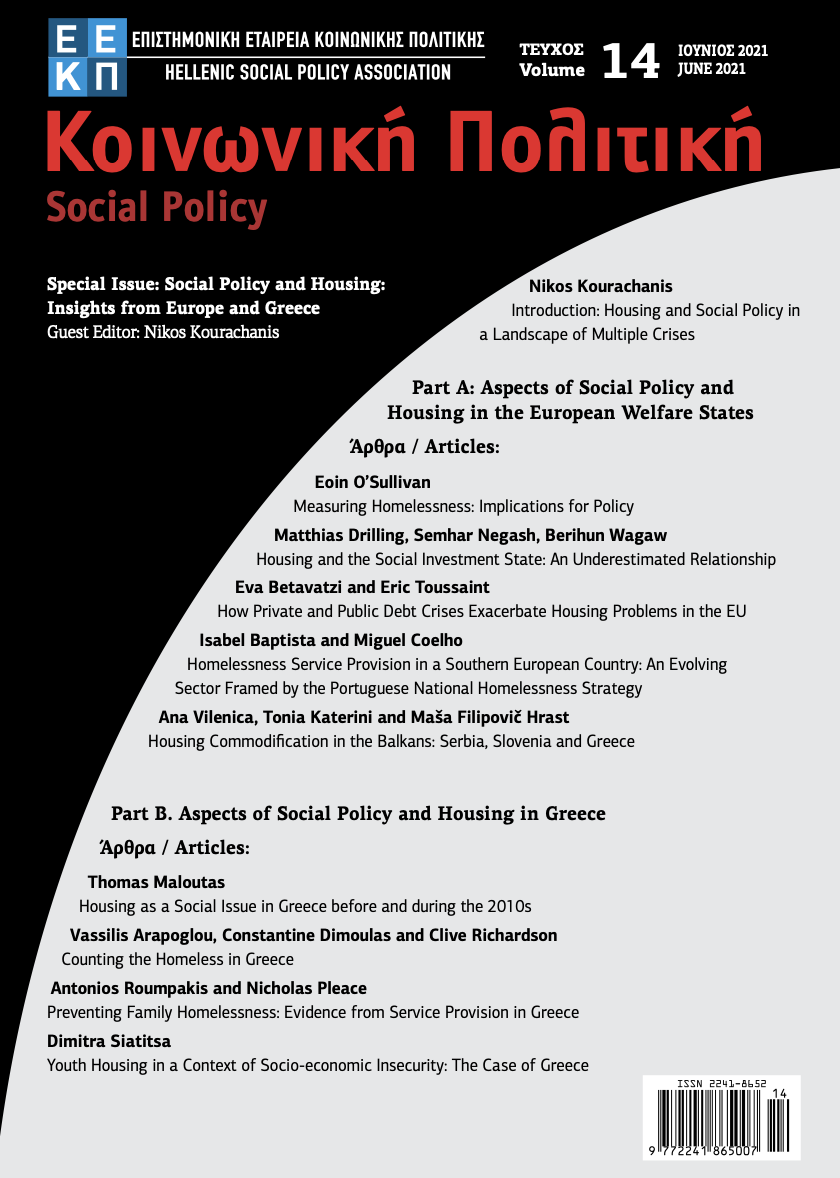Measuring Homelessness: Implications for Policy
Περίληψη
Who we define as experiencing homelessness and how we research the experience of homelessness may seem technical matters for statisticians and researchers to agree on rather than matters of public policy. In this paper I argue that the way in which we collect data on homelessness and how that data is presented has significant implications for the framing of homelessness, with the majority of countries measuring homelessness at a point-in-time, which provide little information on the dynamics of homelessness. Using the example of the Republic of Ireland, we can see that the stock and flow data on homelessness show very different patterns of the experience of homelessness, with the number of adults in emergency accommodation at a point- in-time is determined by the numbers entering emergency accommodation, the length of time in emergency accommodation and the rate at which exits occur.
Λεπτομέρειες άρθρου
- Πώς να δημιουργήσετε Αναφορές
-
O’Sullivan, E. (2021). Measuring Homelessness: Implications for Policy. Κοινωνική Πολιτική, 14, 17–34. https://doi.org/10.12681/sp.29075
- Τεύχος
- Τόμ. 14 (2021)
- Ενότητα
- Άρθρα

Αυτή η εργασία είναι αδειοδοτημένη υπό το CC Αναφορά Δημιουργού 4.0.
Οι συγγραφείς των άρθρων που δημοσιεύονται στο περιοδικό διατηρούν τα δικαιώματα πνευματικής ιδιοκτησίας επί των άρθρων τους, δίνοντας στο περιοδικό το δικαίωμα της πρώτης δημοσίευσης. Άρθρα που δημοσιεύονται στο περιοδικό διατίθενται με άδεια Creative Commons 4.0 και σύμφωνα με την άδεια μπορούν να χρησιμοποιούνται ελεύθερα, με αναφορά στο/στη συγγραφέα και στην πρώτη δημοσίευση για μη κερδοσκοπικούς σκοπούς και με δικαίωμα τροποποίησης μόνον με παρόμοια διανομή (αν αναμείξετε, τροποποιήσετε, ή δημιουργήσετε πάνω στο υλικό, πρέπει να διανείμετε τις δικές σας συνεισφορές υπό την ίδια άδεια όπως και το πρωτότυπο).



